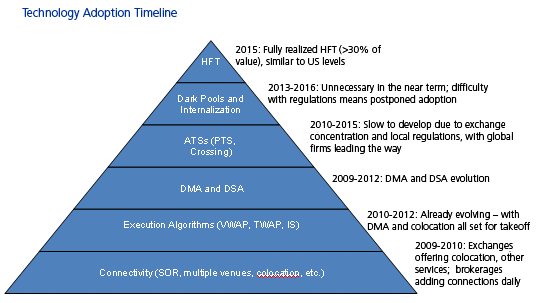Indian Capital Markets: Trends and Prospects
Abstract
After a period of sustained growth, the Indian capital markets suffered a slowdown due to the global financial crisis. However, since early 2009, the markets have recovered. Indices have gained over 80%, and market cap has more than doubled, making India one of the top performing markets.
In a new report, Indian Capital Markets: Trends and Prospects, Celent analyzes trends and opportunities in various segments of the Indian capital market including the equity, debt, and derivatives segment. The report focuses on the drivers of growth in each area and the roadblocks hampering development. It also studies trends in the retail and institutional segments, with a focus on the issues responsible for the current lull in the retail investment space.
Main findings of the study include:
- Though the Indian equity market is highly attractive, with high returns and a high level of investment from both domestic and foreign investors, the market lacks depth and breadth, with limited reach and high concentration in trading among a few companies. Geographic breadth is another problem for Indian markets.
- India’s debt market is underdeveloped; the corporate debt segment is not significant. Of late, efforts have been made to bring regulatory changes to develop the corporate bond market. However, sustained effort and long-term commitment are needed to realize the true potential of this segment.
- India’s derivatives market is growing, but needs to develop further in terms of products and investor base. India is among the leaders in many exchange-traded derivatives instruments. Since the financial crisis, there have been worldwide calls for regulating derivative products, and India, with a robust framework in place for exchange-based derivatives trading, is ready to take advantage of this.
- Domestic brokerages are standing up to the challenge of the foreign brokers, leading to a high growth, competitive space where technology adoption is playing a key role.
- Financial Information Exchange (FIX) and direct market access (DMA) are key growth areas in the institutional segment, with both setting the stage for algorithmic trading.
- FIX adoption is already rapidly rising, and DMA adoption among the top players is nearly complete. By 2012, Celent expects DMA support from even the tier II players.
- To reach the next level in algorithmic and automated trading, regulations have to be more accommodating in terms of approval of algorithms and in allowing non-intrusive DMA for the participants to provide such solutions to their clients. Until then, growth will happen in the execution algorithms space—especially with more exchanges competing in the future, creating a huge opportunity for such algorithms.

“India’s advantage lies in its sound regulatory environment, which shielded the markets, to some extent, from a larger negative impact of the global financial crisis and helped them to regain their mark quickly afterwards,” says Arin Ray, Analyst with Celent’s Indian Financial Services Group and coauthor of the report. “Regulators have been cautious about expanding the market, and transparency and investor protection are always high on the agenda."
"There is significant focus on the adoption of FIX and DMA in the markets. This is mainly driven by the fact that foreign institutional investment (FII) flows are increasing, and in order to gain a share in the business, it is essential to provide compatibility with their systems and requirements,” says Sreekrishna Sankar, Analyst with Celent’s Indian Financial Services Group and coauthor of the report. “But there are a lot of rules and regulations in the usage of algorithms--specifically relating to approval from the exchanges, which are turning many traders away from using algorithms. Until some of these rules are modified, the uptake of algorithmic trading will not be great."
This report discusses the adoption technology that is driving the next phase of growth in the Indian market, along with the regulatory changes needed for further evolution.

